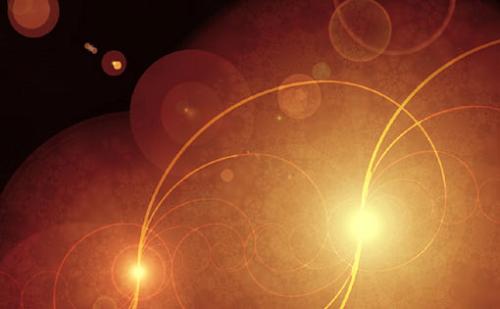Similar to the world of humans, even in nature the "parity" of the basic particles of matter is not always preserved. A recent study conducted at the Weizmann Institute reproduced a historical experiment that proved that not every particle has a partner

In the human world, unfortunately, the partnership is not always preserved. But the discovery, that this is also the case in the world of the basic particles of matter, rocked the world of physicists. It happened 50 years ago. In September 1957, the International Conference on Nuclear Structure was held at the Weizmann Institute of Science. It was the first international scientific conference in Israel, and its very existence here is considered a milestone in the development of the country. 220 senior physicists from 19 countries participated in it.
The celebratory dinner for the opening of the conference, held in the San Martin Hall, was attended, among others, by Prime Minister David Ben-Gurion and Foreign Minister Golda Meir. One of the main topics at the conference was a sensational discovery, prophesied in 1956, and experimentally proven in the year of the conference - 1957. Until that discovery, physicists believed that for every possible process there could also be a "Bavao process" as it is called: it is the same as the original process, except that it is reversed like a mirror image.
In the same way, every particle has an "incoming particle". This is one aspect of a phenomenon known as "maintaining the relationship". But observations and calculations of the theorists T. enough. Lee, and C. Ann. Young from Columbia University showed that neutrino particles always appear as a sort of left-handed screw, and there is no right-handed neutrino. In other words, the parity - at least according to the observations and calculations - is not preserved.
Prof. Shane Shong Wu, known as "Madame Wu", also from Columbia University, performed the first experiment that proved Li and Yang's observation and calculations. In order to do this, she had to build a system in which the spin (internal angular momentum) of all the nuclei included in it is directed in one direction - something that requires cooling the system to a temperature several thousandths of a degree above absolute zero.
At this stage the nuclei disintegrated as a result of the action of the weak force and emitted beta radiation (electrons and neutrinos). In fact, it is not possible to observe neutrinos in this array, but their effect on the electrons is noticeable. Prof. Wu showed that, as expected, the number of electrons emitted in the direction of the spins of the nuclei in the system is much greater than the number of electrons emitted in the opposite direction. If the parity had been preserved, the electrons would have been emitted in both directions in equal amounts. So, in fact, the study proved that even in particles - the pairing is not always preserved.
Non-conservation of parity characterizes the weak nuclear force, while the strong nuclear force and the electromagnetic force maintain parity. Later, however, when the strong force, the weak force and the electromagnetic force were combined in one theory - the standard model - it resulted from the model that even in the atomic nucleus, where the strong force operates, there should be a small dose - about one in a billion - of non-parity conservation. Kenneth Crane succeeded in 1971 in confirming this phenomenon in the hafnium 180 nucleus, and until now this is the only clear example of this phenomenon.
For various reasons, the desire to reproduce this experiment arose recently. This desire led Professors Micah Hess and Gvirol Goldring, from the Department of Particle Physics at the Weizmann Institute of Science, to reconstruct and perfect the experiment. The reconstruction was carried out at the European Laboratory for Particle Physics Research, CERN, and the postdoctoral researchers Lakshmi Sundra and S. K. Shamoli, and other scientists from England and Belgium.
In order to reproduce the experiment, the scientists created nuclei of the isotope hafnium 180 at a stimulating level with a half-life of five hours. These nuclei were "implanted" in a thin sheet of iron that is in a magnetic field at a temperature several thousandths of a degree above absolute zero. As a result, most of the spins of the nuclei were directed in one direction - similar to Madame Wu's original experiment, except that the hafnium nuclei decay through the emission of electromagnetic radiation (gamma rays) and not through beta decay.
The scientists measured the gamma radiation emitted in the direction of the spins and in the opposite direction, and found that the emission rates in the two opposite directions are not equal. This is how they managed to prove - once again - that under certain conditions the relationship is not preserved even in the world of the strong force.
